After I had successfully rehabbed Kaffee over a 6-9 month period I found that Bobby Lyons was giving an online course through Daisy Peel’s online offerings. While this course provided me with a little more information on the iliopsoas injury I also was introduced to things that I could not agree with. Some of the questions and responses to what dogs could or should do or not do was not inline with others that I have worked with online and highly respected such as Susan Garrett and Silvia Trkman.
More recently I took an online course offered at the Fenzi Dog Sports Academy with Debbie Gross from Wizard of the Paws Physical Rehab for Animals in Connecticut. This online course was very good and we had the opportunity to watch the rehab of different types of dogs with iliopsoas. The most helpful information I learned however was where the iliopsoas muscle is located and how extensive it is and how any rehab work takes into consideration the muscles of the iliopsoas and how they are involved in movement. I have done a lot of work and study of rehab using the balance discs but knowing what type of balance disc work would strengthen and support this big muscle group was very very important and helpful.
This writing is a brief summary of what I learned and wrote about a few years ago that was supported by Deb’s class. Additionally, I think it is helpful to know exactly where the iliopsoas muscles are and which balance disc work will help these muscles not only during rehab but also after the dog seems to have recovered and also to help prevent this injury in a dog.
Month 1:
Week 1: When a dog has had their iliopsoas injured more than likely there will be limping on the hind leg affected and pain. Kaffee was standing on 3 legs and would not put weight down on this leg. When the dog is in this acute phase it is important to have them rest. Pushing the dog too early into activity can result in irreversible damage. This last sentence I cannot stress enough…… DO NO PUSH THE DOG TOO EARLY BACK INTO ACTIVITY. Slow and conservative is what we should be thinking.
I have had several people who do agility come up to me at shows and tell me what a hard time they have had getting their dogs sound again. Many people are so anxious to resume their running and jumping with their dogs that the dogs do not fully recover and this becomes a chronic injury.
During this initial acute injury phase of week 1, rest should be encouraged. I was told by my vet that Kaffee did not have to be on crate rest as long as he was not running or jumping on things. When I took him outside to go to the bathroom I put him on a leash to keep everything very very slow. My goal was for him to walk on all 4 legs without a limp.
Once Kaffee was able to weight bear on this back leg (2-4 days after the injury) I started him on very short leash walks. Dogs should be on a 6 foot leash and NOT ON A FLEXI. The flexi allows for the dog to trot and at this time the dog should only be walking for a very short distance on a flat surface. Kaffee started with 5 minute walks.
I watched Kaffee very carefully after his walks to see if he was still weight bearing on all 4 legs, not hopping and was not showing signs of pain or discomfort. We did these 5 minute leash walks twice a day. After 2 days since he stayed sound, I increased his walks to 10 minutes…. Again on the 6 foot leash. He was not ready to begin any trotting at this time.
OTHER TREATMENT OPTIONS
The use of laser is excellent at this time if you have access to a veterinarian who has one. The laser helps to reduce the inflammation. We started laser treatment on Kaffee during week 3. I have since purchased a very good laser recommended by Deb Gross and use it regularly on my dogs. Your veterinarian might also recommend anti-inflammatories. I choose to use some holistic supplements (DGP and Trameel with Arnica) recommended by my vet in New York that I work with by phone rather than using NSAIDS (non-steroidal anti-inflammatories) prescriptions.
THE GOAL DURING WEEK 1 AND 2 is to increase weight bearing of the affected limb without causing pain or discomfort. It is so important at this time to carefully monitor this. Watch the dog after the walks; watch them when they get up from resting - are they limping on the first few steps taken; when taken outside on the leash do they weight bear and walk evening on all 4 legs? Most importantly REST and very slow integration of activity.
WEEK 2: If the dog continues to weight bear and appears not to have pain or discomfort then
- The periods of leash walking can increase to 10-15 minutes still on the 6 foot leash;
- Have the dog stand on a stable surface on all 4 legs up to 30 seconds. Try to encourage the dog to stand equally with weight on all 4 legs and not to weight shift. The dogs topline should be flat. This can be repeated several times during the day. If the dog is having trouble with 30 seconds do what is comfortable and try to build up to 30 seconds.
- Continue to monitor the dogs indoor activity not allowing running or jumping. You may still need to take them outside on a leash.
WEEKS- 3-4: Progression of leash walking. By the end of week 4 Kaffee was able to walk 30-40 minutes on a flexi leash with no signs of lameness, hopping or discomfort.
What I have learned and is different now from my blog writing a few years ago is that if the dog remains sound then they can begin some active stretching to assist the healing process. This active stretching can be done with low objects and balance discs. It is very useful at this point to know where the iliopsoas muscle is. The balance disc exercises are added very slowly and are designed to stretch and strengthen the iliopsoas.
BEFORE YOU BEGIN:
- Before you begin any work involving stretching, always be sure the dog is warmed up. Take them for a 10-15 minute leash walk.
Then when you return, before you begin the exercises ask them to stand on all 4 feet with equal weight bearing for 30 seconds. Increasing the blood flow assists the body with preparing for stretching.
Exercise 1:
- Find a low object or disc (2-4 inches high) and ask the dog to place their front feet on this object, their hind feet stay on the floor. This simple and very easy exercise begins hip and lumbar extension.
- Ask the dog to hold this position for 10 seconds. Step off the disc; short rest and repeat 5 times building up to 10 times.
- Ideally the dog should be putting equal weight on both hind legs on the floor.
- While the dog is standing ask them to look up at your for a treat. This helps increases the weight on the hind limbs.
Exercise 2
- After doing exercise 1 for one week with no signs of lameness or discomfort this exercise can be added --- STAND TO SIT and SIT TO STAND.
NOTE: One of the important things I learned is that DURATION IN HOLDING position is important for building strength. Often in the past I would have the dog move from sit to stand or change position without keeping a duration of 15-30 seconds.
WEEK 5: Kaffee started on walking over one inch caveletti poles spaced 12 inches apart. Walking over a large wobble board, and putting his hind feet on the 22 inch balance disc stretching forward to a treat. All this was done on leash to keep him slow and from running (see my video under our first blog post on Kaffee's iliopsoas rehab.) We also continued our 30-40 minute walks.
The use of progressing to a taller disc at this time would be fine if there were no problems with the 2-4 inches for the step-up of the front limbs.
Week 6 and 7: Caveletti work progressed to trotting over 3 inch caveletti poles spaced 12 inches at first and then 2 feet apart. We started tugging on the wobble board and getting him to balance the board with 4 feet on it. Used the boso trainer for stretching exercises having him do a stand extended out to a treat; then a sit to stand; sit to stand. Laser treatments stopped after week 6. During this time he did not seem to be in any pain so the herb for pain was stopped.
SEE MY PREVIOUS BLOG ON KAFFEE'S ILIOPSOAS REHAB DONE TO SEE THE VIDEOS ON OUR WORK WITH CAVELETTIS.
Beginning Rehab on Balance Discs
This is where I would depart from some of the balance disc work I was doing and wrote about in my first blog. What I now know is the location of the iliopsoas where it originates and what movement it supports. The iliopsoas originates in the lumbar spine or the lower back and inserts in the femur or upper thigh.
- Exercises on the balance discs are chosen to encourage extension of these muscles.. By elevating the dogs legs we are encouraging extension.
- Exercises to encourage flexion of these muscles.
- Also, holding this stretch for 15-30 seconds is very important.
REMEMBER TO BEGIN WITH THE DOG STANDING ON ALL 4 FEET, WEIGHT EVENLY DISTRIBUTED. If your dog is not familiar with balance discs, do this on the floor or flat surface such as a plank. Here is Kaffee doing is 4 feet work on a FitPaws bone.
Below are 2 pictures of work on the balance disc that progresses from EXTENSION to FLEXION when the dog is asked to rock back into a down. The video to follow will show examples of this.
This is a favorite way I like to have the dogs do flexion: stand on 2 discs and then rock back into a down.
Sitting on a disc is hip flexion as the bottom photos show.
All of these exercises shown in the pictures above help the dog develop and strengthen their core. Exercises do not need to be dramatic on these discs to accomplish this.
Recently I was told by an owner of a senior dog (10 years old) rehabbing with a vet for ACL sugery that the dog was asked to do SIT PRETTY during a 30 minute rehab session. The following day this dog was again lame on their hind end. Rehab and work for strengthening the core does not need to be fancy, showy or difficult or long in duration. These exercises are all excellent and can be built up gradually.
When I first started Kaffee on the balance discs he could not do a lot of the work such as his stand on the FitPaws bone… but over time he has developed this strength and proprioception and does this happily and easily.
A few exercises for developing core strength that I use several times a week with my dogs.
- Begin with a static stand: begin on a flat surface and progress on to balance discs. Be sure the dog’s topline is flat and that they do not weight shift. Work up to holding this for 30 seconds.
- STAND TO SIT and SIT TO STAND. Goal is to look for a tight sit.
- Choose 1 disc (2-4 inches) for a step-up with front feet on the disc and hind feet on the floor. The goal is to gradually increase weight on the hind end. Do not over extend in the back. When the dog can do this, hold a treat up and have them look up adding to the weight on the hind limbs. Work up to holding for 30 seconds
Since my dogs can do this and are not rehabbing I choose 2 balance disc to do this: 2 donuts of different height; a medium and a large balance disc; donut and a disc; FitPaws bone and donut. Video will show this.
- Reverse this position and have the hind limbs elevated on a disc or object 2-4 inches on the ground; have the fore limbs on a flat surface.
The exercises above can be done for 10 seconds initially working up to 30 seconds duration holding the position. Repeat 5-10 times.
Progression
- Increase the height of 2 discs such as a large and medium balance disc, have their hind limbs higher then front limbs and ask for a STAND TO DOWN – try to get the dog to rock back. As dog progresses the types of disc can be changed. My dogs do this with a donut and a large balance disc.
- Reverse their position on the discs with front limbs higher than hind limbs and ask for a STAND TO A SIT. See video
- Increase the height of the 2 discs used for extension: hind feet on floor or another disc; front feet higher on a disc or object. Hold for 30 seconds. Ask for SIT TO STAND. See video on how to teach sit pretty that most dogs can do without stressing the lumbar area.
This picture shows an example of 2 unequal disc sizes I use. On these discs we do a stand for 30 seconds and ask for a rock back into a down. Notice Myst is not evenly distributing weight on all 4 legs which we work on. Then we reverse and have her hind feet on the FitPaws bone and front limbs on the donut and ask for a STAND TO SIT. This is easier for the dog initially and should be done as a warm-up before progressing to a large Peanut for the extension.
The most important thing to remember when rehabbing from iliopsoas injury is to go SLOWLY and not to bring the dog back to quickly into activity or agility. The pictures above show the muscles used for iliopsoas extension and flexion. Once an injury has occurred it is very easy to re-occur or become chronic if progression of strengthening this muscle and the core is not slow and regular.
Read my earlier iliopsoas blog on how I rehabbed Kaffee. Kaffee was successful rehabbed but slowly and over a 9 month period. In my earlier blog on Kaffee’s rehab you will see that we worked very slowing before we even got back to off leash hiking. I always evaluated uneven striding when we hiked and how he did after our hikes up to 48 hours. You will see that after 6 months of rehab when Kaffee was doing well that I allowed him to hike behind our house. The footing is rocky, hilly and uneven. After a short walk I noticed he was a little off on his stride. This indicated to me that he needed more time and our hikes needed to be on flat surfaces.
A few guidelines…
- Always warm-up a dog before exercise or stretching. A 10-15 minute walk on a short 6 foot leash is perfect. In our doggie gym we do the static stands on 2 discs for 30 or more seconds several times before beginning our other disc work. The border collies also tug in this room before we begin.
- Don’t get caught up in “sexy tricks (such as sit pretty) and stacked or high disc combination work. Remember that more is not better. All dogs need to start very slowly to build up their confidence, strength, and core.
- Go slowly with the duration of statics and balance disc work. Start with static durations of 10 seconds and work up to 30 seconds.
- Start with small discs and small step-ups or step-downs.
- Start with a short time working the discs and build up.
- Try to work the discs regularly; every other day or three times a week is excellent.
- Continue to use the balance discs and stretching when the dog seems to be over the initial injury; 3 times a week is excellent.
- Always warm-up then stretch a dog before activity such as agility, herding or hiking.
DISCLAIMER: The writings in my blog are based on my experience, research and medical knowledge from working in the healthcare field for over 20 years. The conditions such as iliopsoas are written about to help provide knowledge that has worked for my dogs. This information is not intended to be the treatment and rehab for all dogs. Each dog and their degree of severity of the condition is different and all treatment and rehab should be under the guidance of a licensed veterinarian.
VIDEOS
- VIDEO 1: Beginning work for dogs who have not done balance discs to begin building core strength. If your vet OKs this work, excellent for iliopsoas rehab and iliopsoas strengthening.
- VIDEO 2: Progression of work started in video 1 to further build on dogs confidence on balance discs to strengthen hind limbs, build core strength and strengthen iliopsoas muscle.
- VIDEO 3: Earlier video done showing more advanced uses of balance discs that incorporated DURATION for building core strength and iliopsoas.
- VIDEO 4: More work building on foundation of videos 1 and 2.
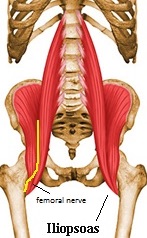
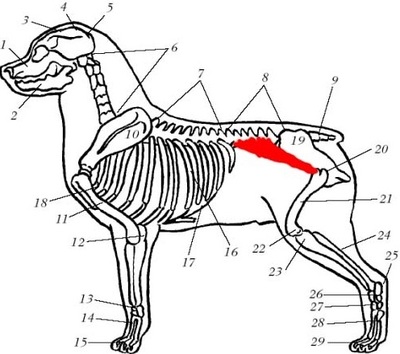
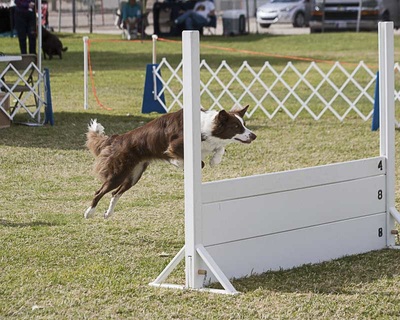
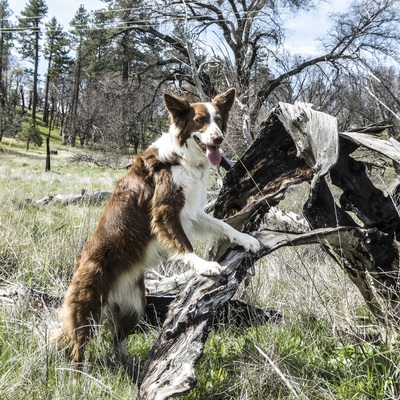
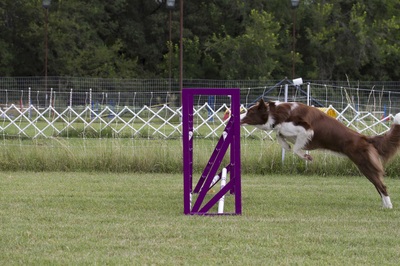
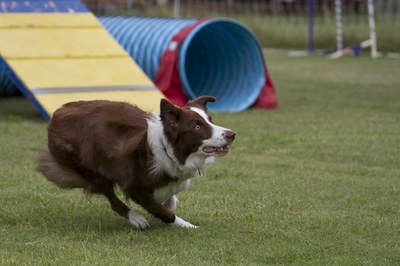
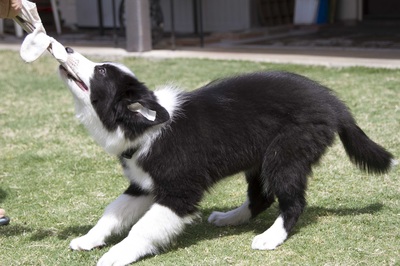
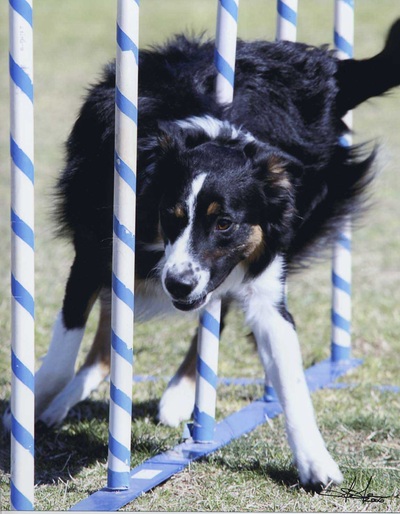
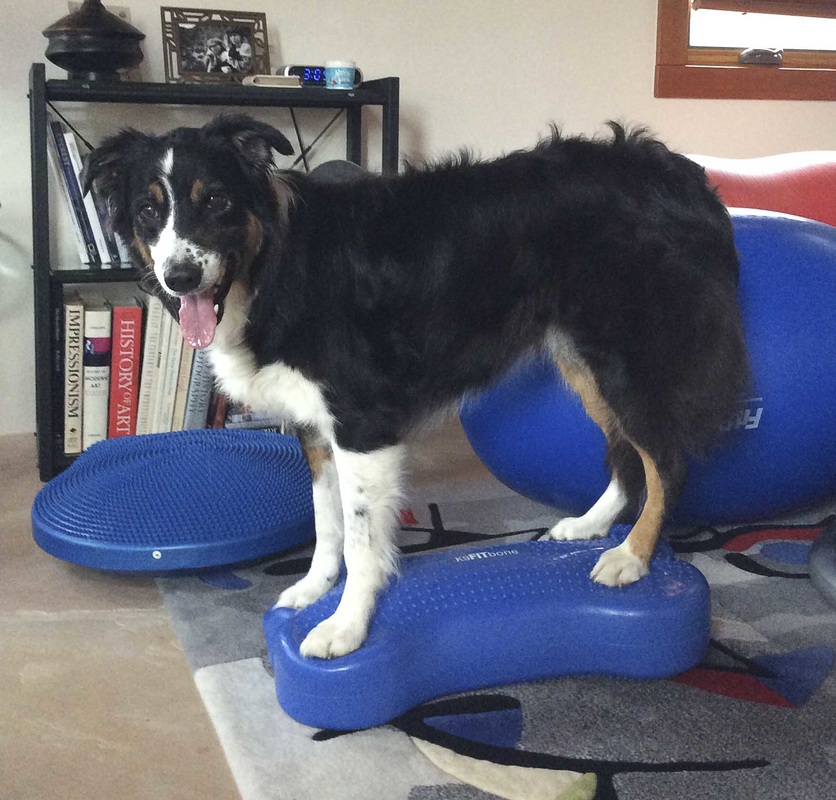

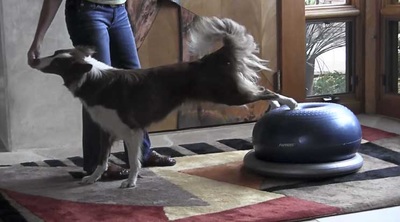
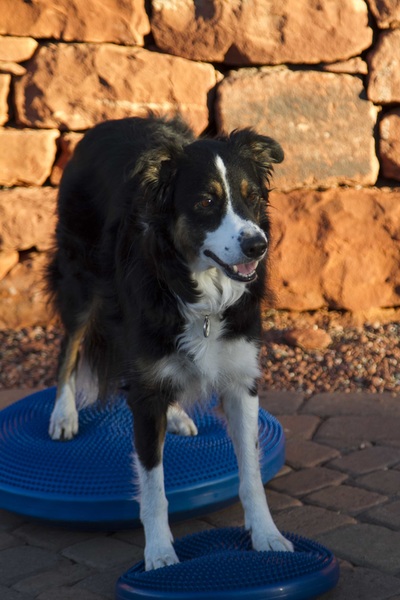
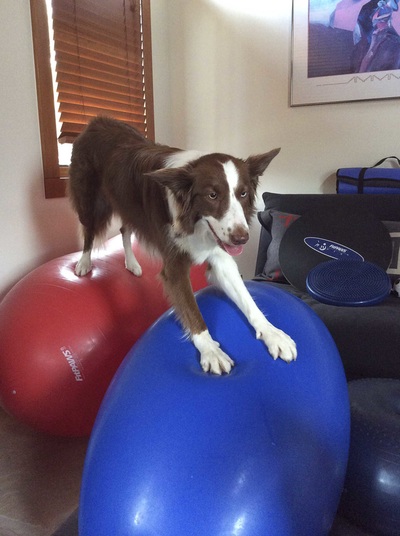
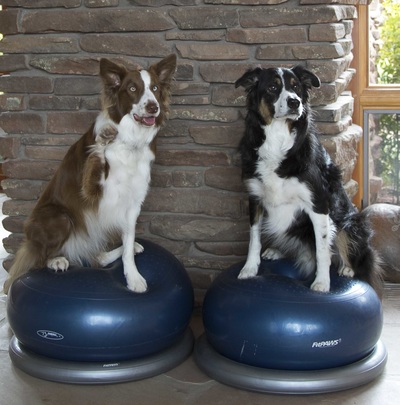
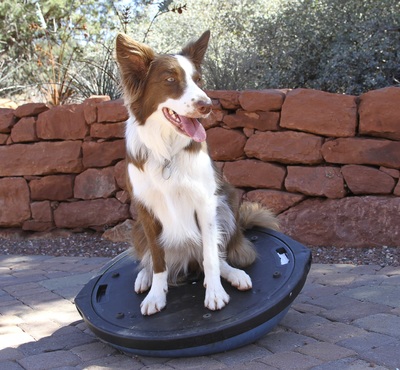
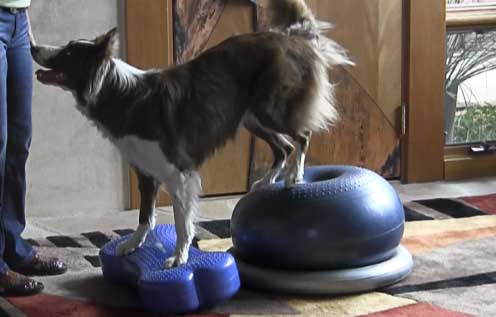
 RSS Feed
RSS Feed